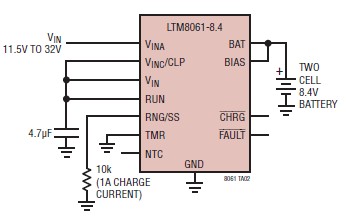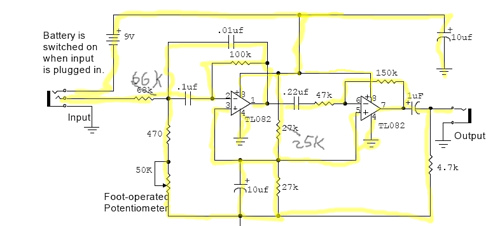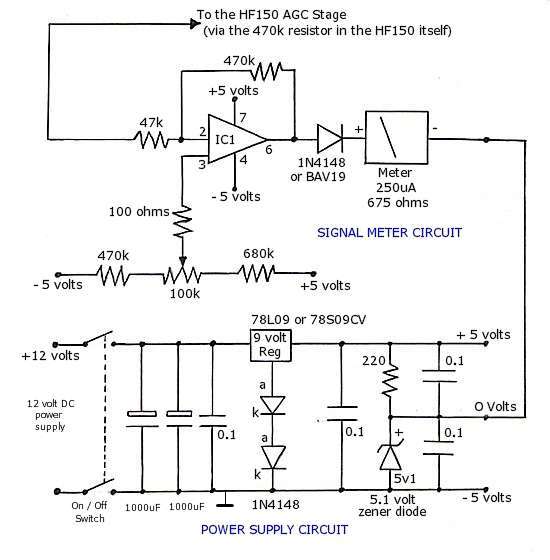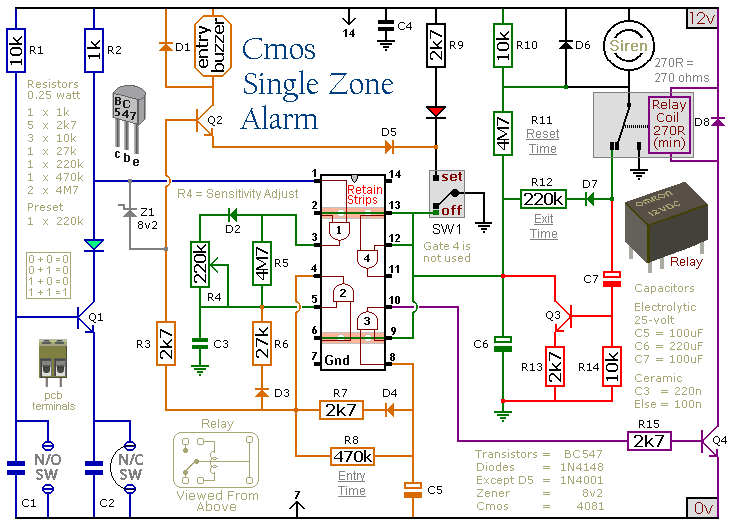
Base frequency selection frequency-selective emitter type transformer coupled oscillator circuit
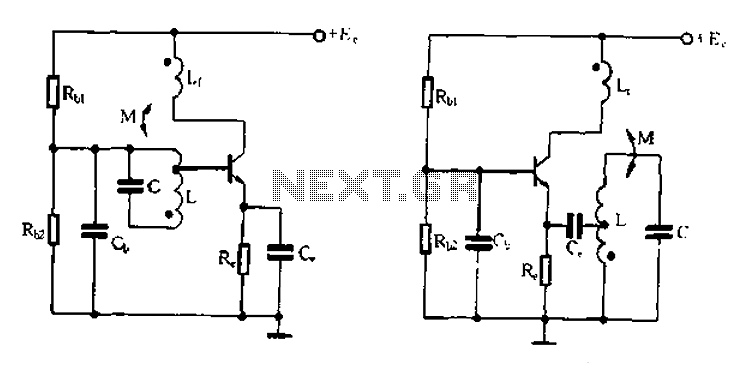
Base frequency selection, frequency-selective emitter type transformer coupled oscillator circuit
The described circuit is a transformer-coupled oscillator that utilizes an emitter type configuration to achieve frequency selection. This type of oscillator is designed to generate signals at specific base frequencies, making it suitable for applications that require precise frequency control.
In this configuration, the oscillator employs a transformer to couple the output back to the input stage, which enhances stability and improves the overall performance of the circuit. The emitter follower configuration allows for high input impedance and low output impedance, facilitating effective signal amplification while maintaining signal integrity.
The base frequency selection can be achieved through the use of reactive components, such as capacitors and inductors, which form a tuned circuit. The values of these components determine the resonant frequency of the oscillator, thereby allowing for fine-tuning of the output frequency.
In practical applications, this oscillator circuit can be utilized in RF transmission systems, signal generators, and various communication devices where specific frequency generation is critical. The use of transformers in this design also aids in impedance matching, reducing signal loss and improving efficiency.
Overall, the transformer-coupled emitter type oscillator circuit presents a versatile solution for generating stable and precise frequencies, making it an essential component in modern electronic systems. Base frequency selection, frequency-selective emitter type transformer coupled oscillator circuit
The described circuit is a transformer-coupled oscillator that utilizes an emitter type configuration to achieve frequency selection. This type of oscillator is designed to generate signals at specific base frequencies, making it suitable for applications that require precise frequency control.
In this configuration, the oscillator employs a transformer to couple the output back to the input stage, which enhances stability and improves the overall performance of the circuit. The emitter follower configuration allows for high input impedance and low output impedance, facilitating effective signal amplification while maintaining signal integrity.
The base frequency selection can be achieved through the use of reactive components, such as capacitors and inductors, which form a tuned circuit. The values of these components determine the resonant frequency of the oscillator, thereby allowing for fine-tuning of the output frequency.
In practical applications, this oscillator circuit can be utilized in RF transmission systems, signal generators, and various communication devices where specific frequency generation is critical. The use of transformers in this design also aids in impedance matching, reducing signal loss and improving efficiency.
Overall, the transformer-coupled emitter type oscillator circuit presents a versatile solution for generating stable and precise frequencies, making it an essential component in modern electronic systems. Base frequency selection, frequency-selective emitter type transformer coupled oscillator circuit
Warning: include(partials/cookie-banner.php): Failed to open stream: Permission denied in /var/www/html/nextgr/view-circuit.php on line 713
Warning: include(): Failed opening 'partials/cookie-banner.php' for inclusion (include_path='.:/usr/share/php') in /var/www/html/nextgr/view-circuit.php on line 713

